Editor: This is an extensive, vcry excellent listing from 1372
to 1993, too much to absorb at one time. A challenge for all of us
would be to research each of these dates on the web individually to
prepare ourselves to answer the questions posed by the general public,
who still do not understand the Hispanic presence in the Americas .
Somos Primos will be sharing two centuries at a time . . . 1372 to
1573. Since my Lozano back to the 1500s is with a lady of Basque
lineage, it gives me pride to share that the first date recognizes the
Basque arriving in Newfoundland in 1372.
 Sent
by Rafael Ojeda rsnojeda@aol.com
who writes: "Hopefully this tip of historical
information will inspire out young historians to follow up on a place,
a name or event for researches." Sent
by Rafael Ojeda rsnojeda@aol.com
who writes: "Hopefully this tip of historical
information will inspire out young historians to follow up on a place,
a name or event for researches."
1372
Basques arrived in Newfoundland.
1492 Cristóbal Colón discovered America for Spain.
1493 Colón introduced sugar cane in the New World.
1494 January 6. Fray Bernardo Boil celebrated mass in Hispaniola,
perhaps the first mass celebrated in America.
June 7. Treaty of Tordesillas was signed between Spain and Portugal,
which divided the newly discovered lands between the two countries.
Under this treaty, Portugal claimed Brazil.
1499 Vicente Yáñez Pinzón, Alonso de Ojeda, Americo Vespucci,
Juan de la Cosa, Alonso Niño and Cristóbal Guerra were sent by King
Ferdinand and Queen Isabella to explore new territories. They went
along the coast of Brazil to the Gulf of Mexico and the Florida coast.
They also reached the Chesapeake Bay.
1500 Juan de la Cosa drew the first map of America's coastline.
1501 Gaspar Corterreal explored the North American Atlantic coast.
1502 Alberto Cantino drew a map showing Florida's coastline.
1503 European-style architecture was introduced with the
construction of the church of San Nicolás de Bari in Hispaniola,
present-day Dominican Republic.
1505 The first elementary school was founded in Hispaniola.
1507 German writer Martin Waldseemüller, thinking that it was
Americo Vespucci who discovered the new lands in 1492, said that the
new regions should be called America.
1508 Juan Ponce de León arrived in the southern part of Puerto
Rico and explored it.
• Spaniards built the first sugar mill in the New World in the
island of Hispaniola.
1509 August 14. Ponce de León was appointed governor of Puerto
Rico.
• Pope Julius II authorized the Catholic Kings of Spain (Ferdinand
and Isabella) to administer the church in the New World in exchange
for the expenses Spain would incur in the evangelization process.
1510 Garci Rodríguez de Montalvo wrote Las sergas de Esplandián,
a continuation of the adventure novel Amadís de Gaula. The novel
talked about an island called California, where amazons lived. The
Spanish gave this name to what is now the state of California.
• Franciscan missionaries arrived in Puerto Rico.
1511 King Ferdinand granted the Puerto Rican settlement the status
of a city and gave it a coat of arms.
• Pope Julius II issued a Papal Bull establishing various dioceses
in America.
• The first catholic diocese in the United States was established in
Puerto Rico by Pope Julius II. He appointed Alonso Manso as the first
bishop.
1512 Ponce de León was granted permission by the king to explore
an island called "Bimini", supposedly north of the Bahamas
and search for a fabled fountain of youth.
• Dominicans founded the first hospital in the New World in
Hispaniola.
1513 April 2. Juan Ponce de León, landed on the Florida coast,
just north of Cape Canaveral, on Eastern Sunday (Pascua Florida). He
then went south around the Florida peninsula around the Florida Keys
and up the coast of the Gulf of Mexico.
Vasco Núñez de Balboa crossed the Isthmus of Panama and discovered
the Pacific Ocean.
• Bishop Alonso, of San Juan, Puerto Rico, founded the first school
in the United States.
• The king of Spain issued a royal order by which the natives were
to be taught latin to improve their education.
• Antonio de Alaminos, Ponce de León's pilot, discovered the Gulf
Stream.
1518 Juan de Grijalva reached the area around Galveston Island,
Texas.
Diego Velázquez explored a region of South Carolina.
1519 Alonso Alvarez de Pineda explored the Golf Coast, as far as
Texas. A map of his expedition shows Cuba, Florida and the Gulf of
Mexico coast. He was the first one to realize that Florida was not an
island. He discovered the mouth of the Mississippi River. He entered
Mobile Bay (Alabama), which he named "Bahía del Espíritu
Santo." He also probably sighted the bay of Corpus Christi,
Texas.
1520 Spaniards from Cuba reached the South Carolina coast.
• Francisco de Garay, the governor of Jamaica, sent Diego de Camargo
to attempt to establish a settlement near de mouth of the Rio Grande.
• Francisco Gordillo explored the North Atlantic Coast.
1521 Francisco Gordillo and Pedro Quexós reached the North
Carolina coast. During their explorations, they took Indians as
slaves. Once Spanish authorities found about this, they were
reprimanded and ordered the Indians to be set free and returned to
their homelands.
• Ponce de León arrived in Charlotte Harbor, in yet another effort
to colonize Florida. He had brought with him colonists, missionaries
and livestock and many different kinds of seeds. The effort failed.
• Fernando de Magallanes, on a voyage to circumnavigate the world,
reached Hawaii and Guam. He died after arriving in the Philippines.
1522 Juan Sebastián de Elcano finished Magallanes' expedition,
arriving in Spain on September 6, being the first one to
circumnavigate the globe.
1523 Lucas Vázquez de Ayllón was named adelantado, in a region
north of Florida.
• The first sugar mill in the United States was established in
Puerto Rico.
• Gonzalo de Ocampo explored the area near present-day Brownsville,
Texas.
1524 Diego Miruelo explored Florida's western coast.
• Gonzalo de Sandoval told in Mexico City a tale of an island called
California that was full of riches and inhabited by women only.
1525 Esteban Gómez left the port city of La Coruña, Galicia
(Spain) to explore the Atlantic Coast from Florida to Labrador,
passing by the mouths of the rivers Connecticut, Hudson and Delaware.
On his trek, he reached Newfoundland, New Brunswick, Nova Scotia, Cape
Cod, Long Island, New York Bay and entered the Chesapeake Bay at White
Haven, Maryland.
• García Jofre de Loaysa led a seven-ship expedition from La Coruña
(Galicia, Spain) to the Hawaiian Islands. They reached the Pacific the
following year. Disease and weather took a heavy toll on the
expedition. By the time it reached the Moluccas, only one ship was
afloat.
• Nuño de Guzmán became the governor of the Panuco-Rio Grande
area.
1526 Lucas Vázquez de Ayllón, accompanied by Pedro de Quexós as
pilot and Dominican Fathers Pedro Estrada, Antonio Montesinos an
Antonio de Cervantes sailed with an expedition to colonize the
Carolinas. The expedition reached the Chesapeake Bay and Fray
Montesinos, celebrated the first mass in Virginia, near Jamestown. One
of the ships ran aground near Cape Fear and another had to be built,
perhaps the first one built in the United States. The expedition
founded a settlement at San Miguel Gualdape, opposite present-day
Georgetown, South Carolina. The Spanish called the area Chícora.
• Pánfilo Narváez was granted royal privileges to explore, conquer
and settle the territory from Florida to the Rio Grande.
• José de Basconales is believed to have explored Arizona on his
trip from Mexico to the Zuni territory.
1527 Alvaro de Saavedra led an expedition to Hawaii and the
Philippines, from Zacatula, Mexico.
1528 Pánfilo de Nárvaez led an expedition to Florida. The
expedition was destroyed by the weather and hostile natives. He
reached Mobile, Alabama. Sancho de Caniedo was sent by governor Nuño
de Guzmán to take possession of the Rio Grande region. The attempt
failed.
• 1528-1536 The survivors of the Nárvaez expedition to Florida,
Hernán Núñez Cabeza de Vaca, Andrés Dorantes, Alonso Castillo and
their black slave Estebanico, wandered for 8 years throughout southern
U.S. (Texas and New Mexico). They reached Mexico City on July 24,
1536. During their ordeal they had to endure all kinds of things to
survive. In one instance, in 1528, Cabeza de Vaca performed a
succesful surgical operation on an Indian. This was, perhaps, the
first surgery performed in the United States.
1529 Map maker Diego Ribeiro published a map showing very clearly
the U.S. Atlantic coast.
1530 Pedro Martyr de Angleria wrote his book, The Decades, on the
Spanish explorations of America.
1533 Gonzalo Jiménez de Quesada discovered Baja California.
1535 Hernán Cortés founded a settlement in Santa Cruz, Baja
California.
1536 Cortés crossed the Gulf of California and explored the lower
regions of Baja California.
• Cabeza de Vaca and his companions wrote in Mexico City a report of
their experiences.
1538 The printing press arrived in Mexico.
• Dominicans in Santo Domingo founded the first university in the
New World.
1539 Francisco de Ulloa, a lieutenant of Cortés, explored the
Gulf of California and proving that California was not an island.
• The diary of the Franciscan Francisco Preciado, a companion of
Ulloa, provides the first printed record of California as applied to
that region.
• Fray Marcos de Niza led an expedition to find the fabled seven
cities of Cíbola, reaching a region of New Mexico inhabited by the Zuñi
Indians. The adobe buildings of the Pueblo Indians glittered in the
sun like gold and Fray Niza, seeing this from far away thought that he
had found such place.
• Hernando de Soto reached Bahía Honda (Tampa Bay) on June 1, at
the head of the largest attempt yet, to conquer and settle Florida. He
was a man of great experience having been Francisco Pizarro's military
advisor in Peru.
• Juan de Añasco, one of De Soto's lieutenants, founded the
settlement of Espíritu Santo, Florida. This was the beginning of
Tampa.
• Hernando de Soto and his companions celebrated Christmas in the
area of Tallahassee, Florida. This was the first Christmas celebration
in the continental U.S.
• 1539-1541 Hernando de Soto explored the regions of Florida,
Georgia, the Carolinas and then crossed the Appalachian mountains into
Tennessee. Other regions explored by him were Alabama, Mississippi,
and Arkansas. The source of the Mississippi river was discovered.
1540 Francisco Vázquez de Coronado led an expedition of 336
Spaniards, 100 Indians, 552 horses, 600 mules, 5,000 sheep and 500
head of cattle, through Arizona, New Mexico, Colorado, Texas, and
Kansas, some of the territories described by Fray Niza. Coronado sent
García López de Cárdenas to explore the northwest, reaching the
Grand Canyon, all the while another expedition explored the northeast
and another one led by Hernando de Alarcón reached the Colorado river
and Yuma, Arizona. Hernando de Alarcón is also possibly to be the
first European to have set foot on California soil entering the Gulf
of California and ascending the Colorado River. Coronado also reached
Río Grande.
• Pedro de Tovar, a lieutenant of Coronado, discovered Hopi country,
Arizona.
• García López de Cárdenas, another of Coronado's lieutenant's,
was the first European to have sighted the Grand Canyon.
• Hernando de Soto and his men entered Mississipi territory and
spent the winter in the area. While there, some Indians were caught
stealing from them. Two were killed in the attempt, while the other,
De Soto ordered his hands cut off. Some time later, four Spaniards
were caught stealing from the Indian village nearby and, De Soto, in a
masterful display of equal justice, sentenced two of them to death and
confiscated the properties of the others.
1541 Hernando de Soto crossed the Mississippi River. He reached
Arkansas. There, a number of pigs left behind by the expedition,
became wild. They are the ancestors of the famous razor-back pigs of
Nebraska.
• Vázquez de Coronado reached Palo Duro Canyon, Texas. There, on
May 29, Fray Juan Padilla celebrated a thanksgiving mass. This was the
first Thanksgiving celebration in the United States.
• Domingo de Alarcón, one of the pilots in the Alarcón expedition,
re-explored the Gulf of California and chartered its shores on a map.
He described California as a peninsula.
1542 Ruy López Villalobos, Juan Gaetano and Gaspar Rico reached
the Hawaiian Islands.
• Luis de Moscoso de Alvarado, after the Soto's death in the
Mississippi, organised an expedition west hoping to catch up with
Coronado. The expedition reached as far as the Brazos River (Texas).
• Fray Juan de Padilla was killed in Kansas by the natives. He is
considered to be the first martyr in the United States. A group of
Spaniards reached present-day Santa Fe, New Mexico.
• Cabeza de Vaca published in Spain, Naufragios, an account of his
adventures. This is the first history of the United States. Cabeza de
Vaca can also be considered the first anthropologist and ethnologist.
• 1542-1543 Juan Rodríguez Cabrillo, a Portuguese in the service of
Spain, and Bartolomé Ferrelo explored the West coast, from San Diego
to Oregon.
1543 Luis Moscoso was the first European to discover oil in Texas
when he used oil seepage near Nacogdoches.
1549 Dominican friars Friars Luis Cáncer, Gregorio de Beteta,
Diego de Tolosa, Juan García and Brother Fuentes, arrived in Tampa
Bay. Fray Cáncer, Fray Tolosa and Brother Fuentes suffered martyrdom
at the hands of the natives, soon after their arrival.
1550-1600 Spanish explorers introduced crops and livestocks from
Europe in the United States.
1551
The first university in North America was founded in Mexico City.
1553 A hurricane
destroyed a convoy from Mexico to Cuba, near Corpus Christi, Texas,
with one thousand people. Few survived.
1554 Captain Angel
de Villafana explored the Texas coast in an effort to find the
shipwreck of 1553.
1555 Spanish
officials in Cuba and Mexico urged the king of Spain to start the
colonization of Florida.
1557 Dr. Pedro de
Santander, a crown official, urged king Philip II to establish
settlements, missions and forts from Pensacola, Florida, to Port
Royal, South Carolina.
1558 Guido de los
Bazares was sent from Mexico to find a good place in Florida to
establish a settlement. He arrived at the Bay of Mobile (Alabama),
which he named Filipina Bay in honor of his king, Philip II. On the
opposite shore, the expedition reached the Tensaw River and Montrose,
in Baldwin County, Alabama
1559 Tristán de
Luna arrived at Santa Rosa Island, Pensacola Bay, Florida, and founded
a settlement, which ended up in failure soon thereafter. He also
reached Nanipacana de la Santa Cruz, near Clairborne, and Mobile Bay,
Alabama.
1560 Mateo del Saúz,
Fray Domingo de la Anunciación and Fray Domingo Salazar, members of
Luna's expedition, navigated the Choosa River up the area of
Talladega.
• Fray Pedro Feria, with another group of Luna's expedition, went up
the Escambia River. Luna later established a mission in Santa Cruz de
Nanicapan (Clairborne).
1561 Angel Villafañe,
Antonio Velázquez, Alonso González de Arroche and Juan Torres,
reached the Virginia coast. They continued south to North Carolina and
to Santa Elena (Parris Island), South Carolina.
1562 Diego Gutiérrez
published a map where California appeared for the first time.
1563 Tomás Terrenot,
Spanish ambassador in France, informed Philip II that both the English
and the French had lent their support to an expedition of French
Huguenots to Florida. He warned of the possible threat this could pose
to Spanish shipping in the area.
1564 Miguel López
de Legazpi and Fray Andrés de Urdaneta led an expedition to find a
commercial route from Mexico to the Philippines. Legazpi founded the
city of Manila.
• Diego de Mazariegos, governor of Cuba, sent captain Hernán
Manrique to find the place where the French had established a
settlement and fort. Manrique searched the bays and inlets north of
Cape Canaveral. He found Charlesfort at Port Royal, which had already
been abandoned by the French.
• Spaniards introduced grapes in California.
• Between 1559 and 1564, Spain spent over two hundred thousand gold
pesos on her various attempts to colonize Florida.
1565 Pedro Menéndez
de Avilés founded St. Augustine, the first permanent European
settlement in the United States.
• Fray Martín Francisco López de Mendoza Grajales, founded the
first Catholic parish in the United States. With the founding of the
city, the Spanish system of local government (Cabildo) was introduced
in the continental U.S. The cabildo was an elected town council, with
an elected mayor (Alcalde). Thus, when St, Augustine conducted the
first elections for the cabildo, they were the first democratic
elections held in the continental U.S. The principle of local rights
goes back to the Middle Ages in Spain.
• Menéndez de Avilés started construction of a road linking St.
Augustine with the San Mateo Fort, near Jacksonville. This was the
first road built in the United States.
• Menéndez de Avilés established forts at Santa Elena, South
Carolina, Cape Canaveral, Tequesta (Miami), Calus (Charlotte Harbor)
and Tocobaga (Tampa).
1566 Jesuits founded
a mission in Florida. Their first in the country.
Menéndez de Avilés established San Felipe Fort on Parris Island,
South Carolina.
Juan Pardo and Hernando Boyano, companions of Menéndez de Avilés,
led another group through what is now Polk County, North Carolina. A
fort was built near the mouth of the Wateree River. Pardo continued
eastward to Guatari, where Fray Sebastián Moreno founded a mission.
Meanwhile, Boyano headed westward to the Little Tennessee River, in
present-day Jackson County.
Pardo and Boyano led another group to Guimae in present-day Orangeburg
County, South Carolina. During their explorations during 1566 and
1567, they travelled through what are now North Carolina, Georgia and
Alabama.
Martín de Argüelles was born in St. Augustine. He was the first
"American" of whom documented proof exists.
• Fray Pedro Martínez arrived at Cumberland Island (Georgia). He
was killed by the natives as soon as he got ashore. Later the Spanish
built a fort.
• Spaniards from St. Augustine established a settlement on St.
Catherine's Island, Georgia.
1567 Pedro Menéndez
de Avilés became governor of Cuba and Florida
Jesuits founded a mission to minister to the Tequesta Indians, near
present-day Miami.
• Jesuits founded the San Carlos Mission on Estero Island, on the
Florida Keys. The missionaries assigned to it were Fray Juan Rangel
and Fray Francisco de Villareal. A fort had been built the previous
year and was under the command of Francisco de Reinosa.
1568 Alvaro de Mendaña
and Pedro Sarmiento de Gamboa discovered the Solomon Islands.
1569 Jesuit Brother
Agustín Báez wrote a grammar of the Güale language spoken by the
natives in the area of Georgia and South Carolina. This may very well
be the first book published in the United States.
1570 Jesuits founded
a mission in the Chesapeake Bay. Jesuits settled at Axacan, near
Jamestown. Five Jesuits were killed by the natives in Virginia.
1573 Pedro Menéndez
Márquez explored the Chesapeake Bay. By royal orders, nine
Franciscans arrived in Florida. Their missionary work would be
extended to Georgia and the Carolinas.
|
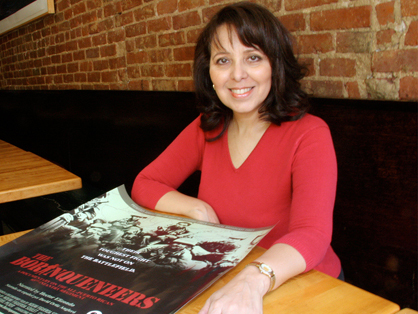
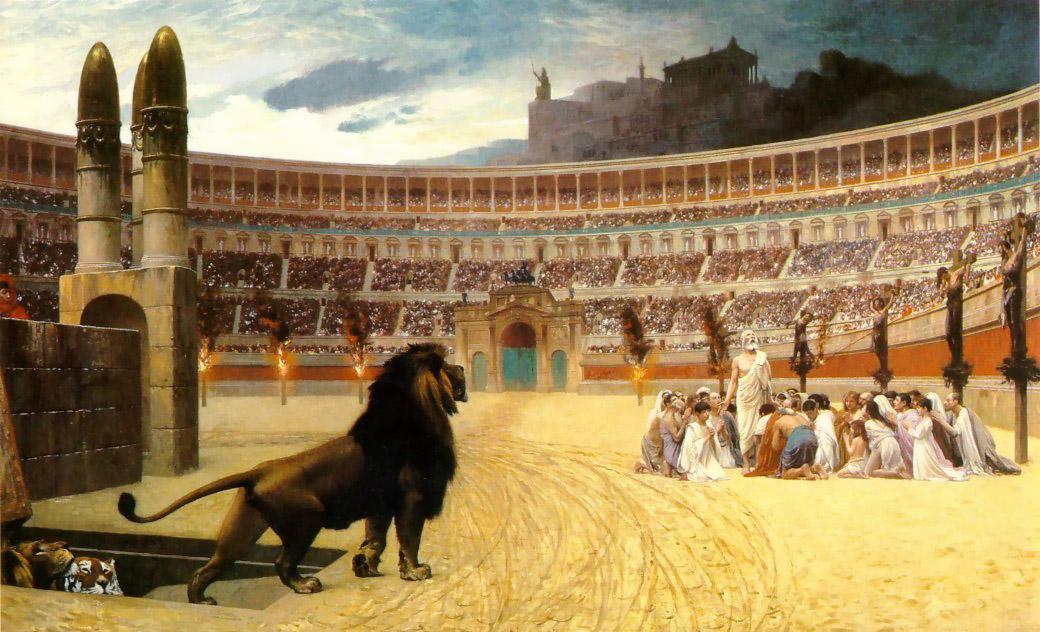
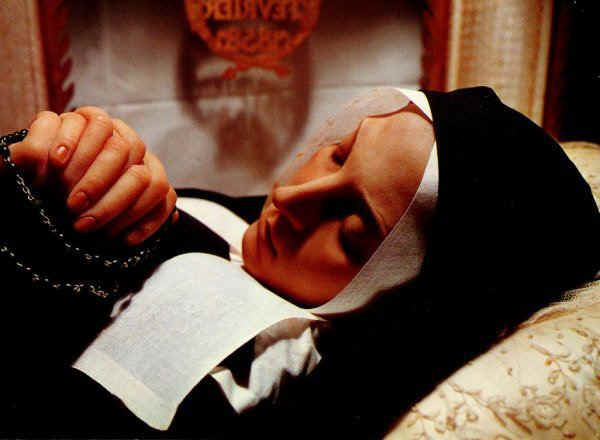
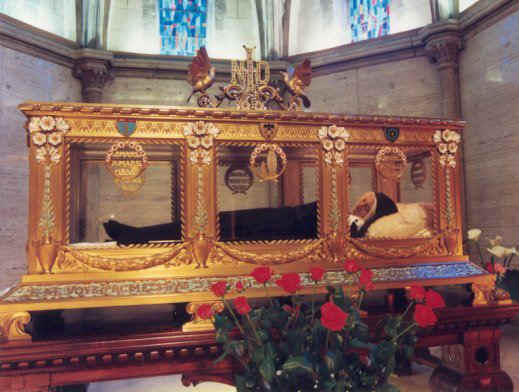
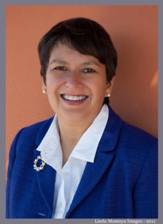
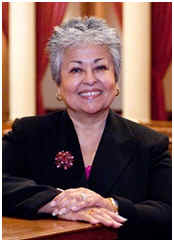
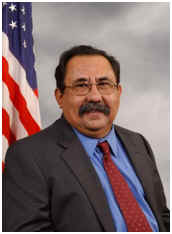
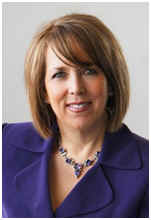
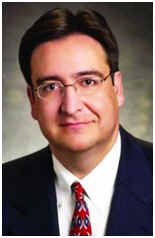
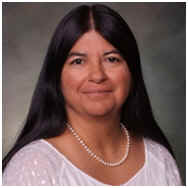
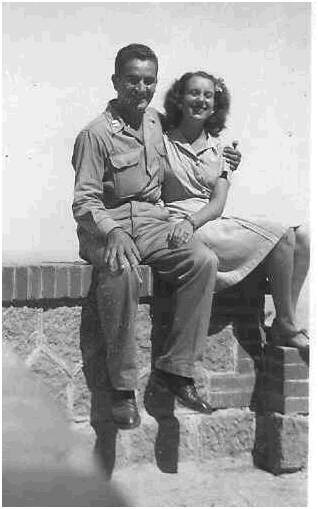
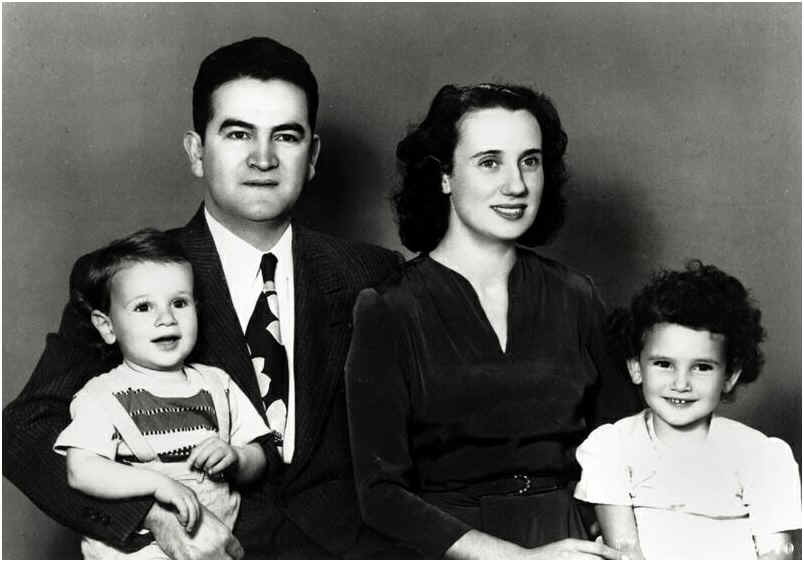
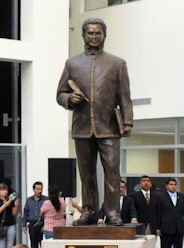
 Russell
Means Remembered
Russell
Means Remembered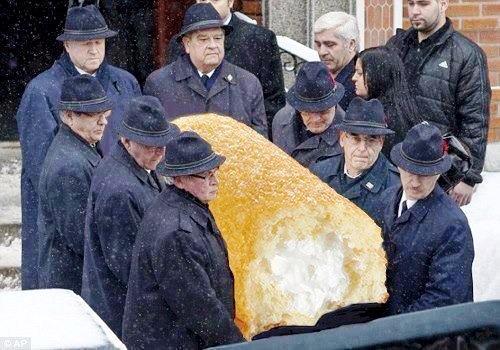


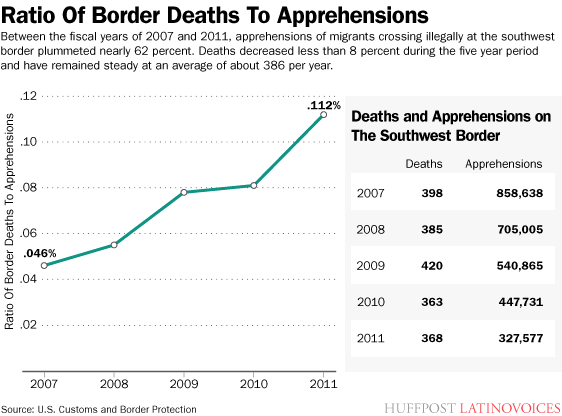

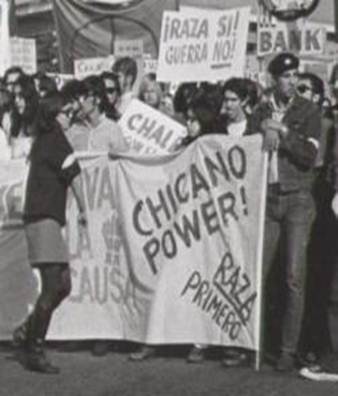

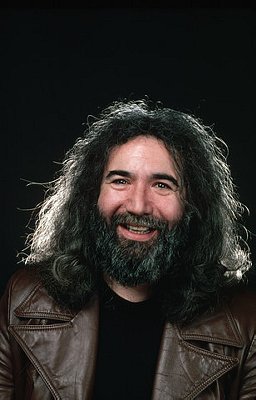
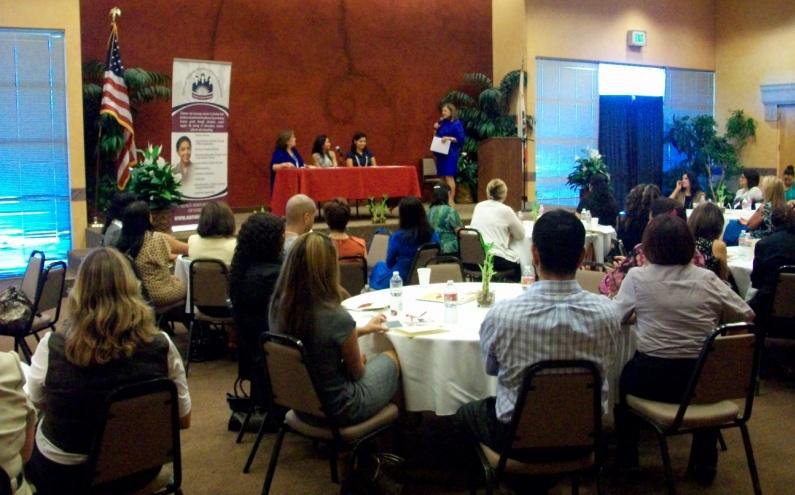
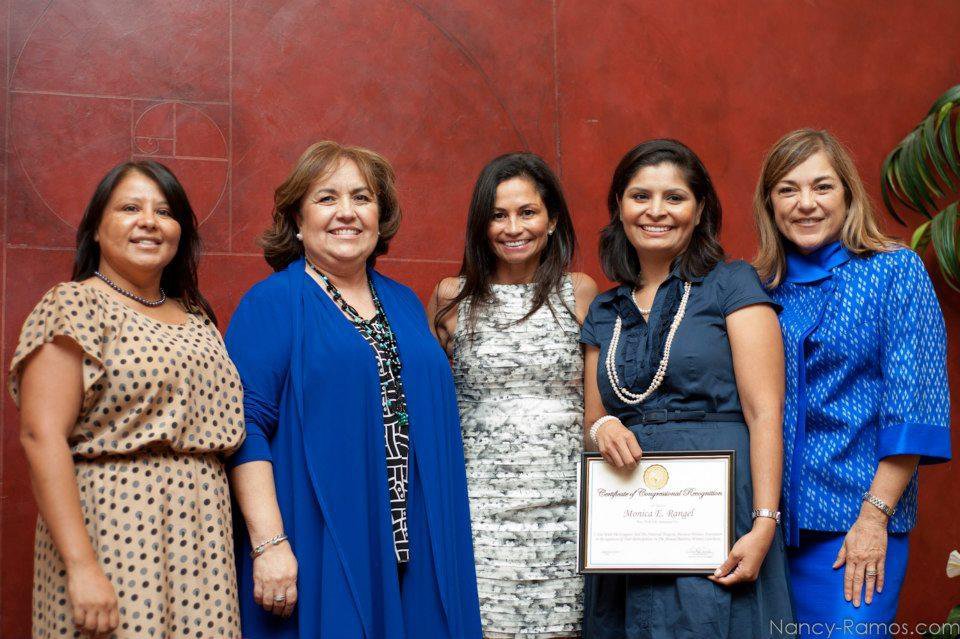
 Sanchez conducted extensive research before
creating The History of Mexico and Mankind for the museum in
Los Angeles. He set up a studio and kiln adjacent to the museum. In it
he fashioned his masterpiece which was affixed to the museum's facade
in 1975. Unfortunately the museum was to be superceded (and
demolished) in 1984 by the California Science Center. The tiles of his
work were removed, preserved, and placed in storage-- for ten years.
Sanchez conducted extensive research before
creating The History of Mexico and Mankind for the museum in
Los Angeles. He set up a studio and kiln adjacent to the museum. In it
he fashioned his masterpiece which was affixed to the museum's facade
in 1975. Unfortunately the museum was to be superceded (and
demolished) in 1984 by the California Science Center. The tiles of his
work were removed, preserved, and placed in storage-- for ten years.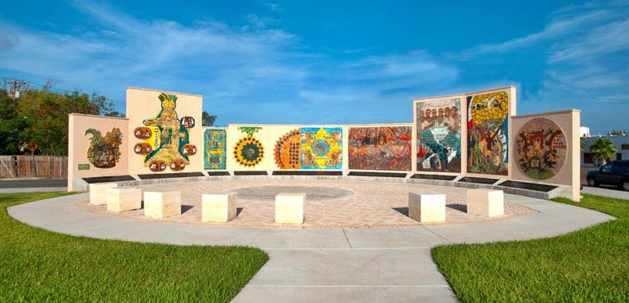
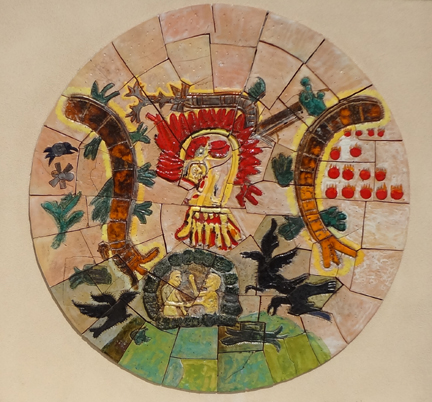
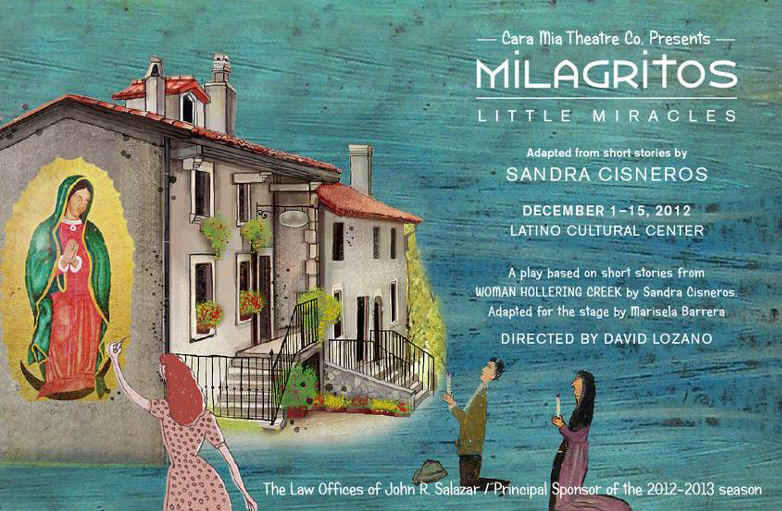
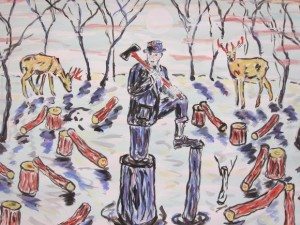 The deer in the painting wants help — or is he saying, “are you
there? Do you see me?” He’s deep in aqua water, his orange-red
antlers like firelight, the house in the background seems no refuge,
the slim trees are bare. He looks straight at the viewer.
The deer in the painting wants help — or is he saying, “are you
there? Do you see me?” He’s deep in aqua water, his orange-red
antlers like firelight, the house in the background seems no refuge,
the slim trees are bare. He looks straight at the viewer.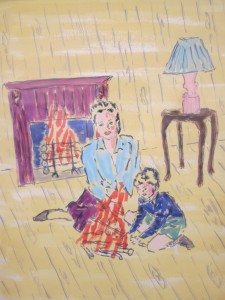 |Twenty-two of Silva’s paintings fill the small gallery (extended
until November 17) — most unframed, many works on paper, a few on
canvas or wood veneer. The works, says Schmidt, are an overview of
Silva’s career. The two gallery owners came to Silva’s studio and
chose the paintings they felt represented various series created by
Silva over the last seven years (2005-2012). “The paintings we chose
represent the highlights and strengths of his work,” says Schmidt.
|Twenty-two of Silva’s paintings fill the small gallery (extended
until November 17) — most unframed, many works on paper, a few on
canvas or wood veneer. The works, says Schmidt, are an overview of
Silva’s career. The two gallery owners came to Silva’s studio and
chose the paintings they felt represented various series created by
Silva over the last seven years (2005-2012). “The paintings we chose
represent the highlights and strengths of his work,” says Schmidt.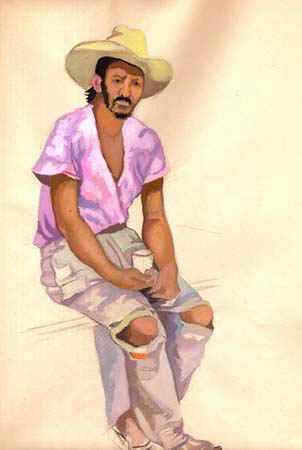


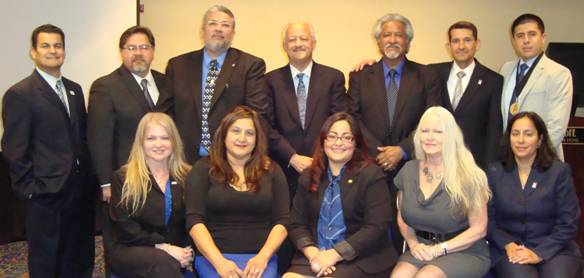
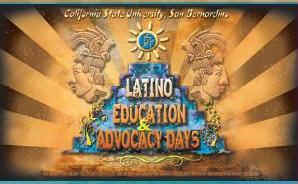
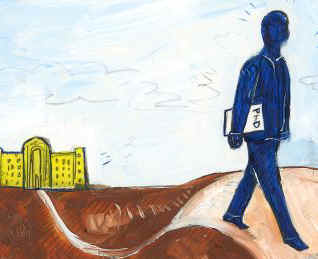

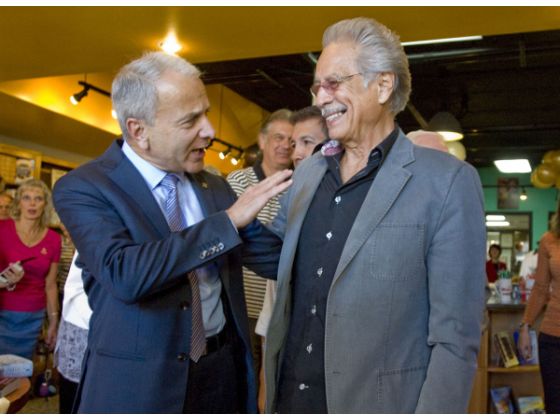
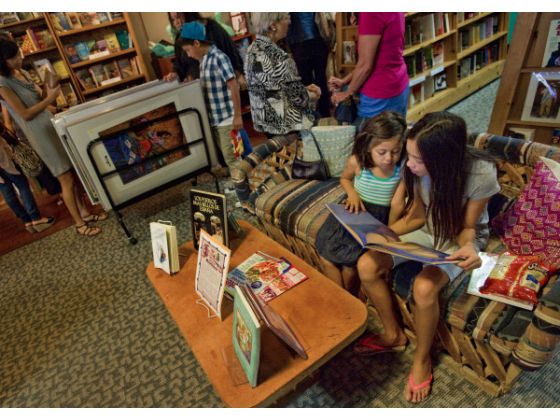 The
new Librería will provide programs for preschoolers, tutoring,
literature groups and art clubs, among others. Educating and involving
parents will also be a focus that Martínez said is integral for
success in the community.
The
new Librería will provide programs for preschoolers, tutoring,
literature groups and art clubs, among others. Educating and involving
parents will also be a focus that Martínez said is integral for
success in the community.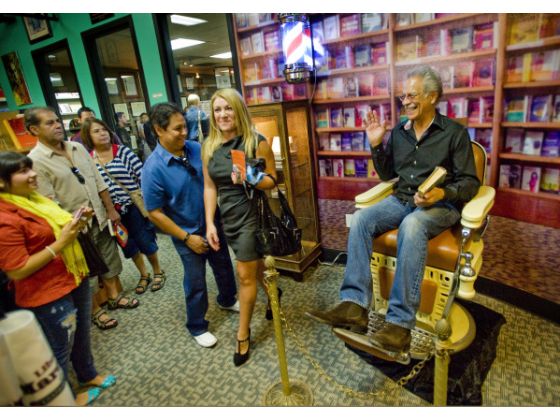 "I
loved cutting hair, it was how I sent my kids to college," he
said. "But now I do that maybe once or twice a month."
"I
loved cutting hair, it was how I sent my kids to college," he
said. "But now I do that maybe once or twice a month."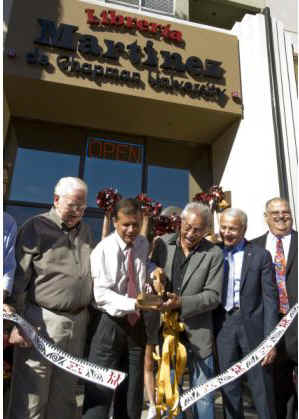 Chapman University has joined with Orange County cultural leader Ruebén Martínez as a partner in his bookstore, Librería Martínez, located in downtown Santa Ana. The bookstore will become a nonprofit community educational initiative under the university’s oversight. With Ruebén Martínez’s guidance and collaborative leadership, Chapman University has assumed responsibility for the bookstore’s operations, and will provide an enhanced business plan for the store’s retail operation as well as opportunities for donor support.
Chapman University has joined with Orange County cultural leader Ruebén Martínez as a partner in his bookstore, Librería Martínez, located in downtown Santa Ana. The bookstore will become a nonprofit community educational initiative under the university’s oversight. With Ruebén Martínez’s guidance and collaborative leadership, Chapman University has assumed responsibility for the bookstore’s operations, and will provide an enhanced business plan for the store’s retail operation as well as opportunities for donor support. 
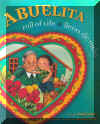





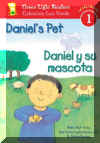
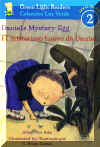
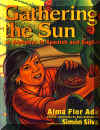
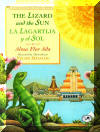
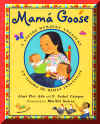

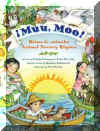
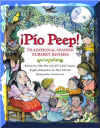
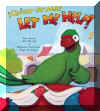
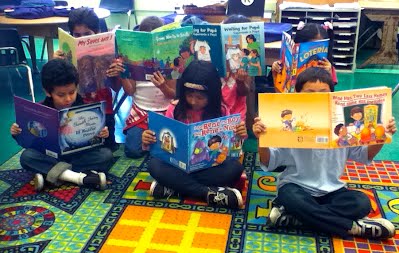

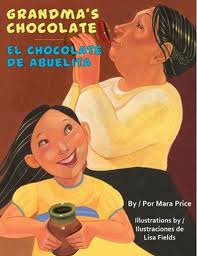
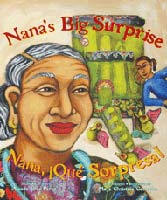
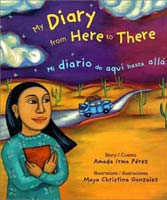
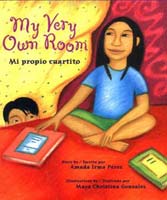

 James Luna is a
writer of varied genre. This is his first children's book.
During his presentation, he spoke about a casual luncheon in which
various writers were enjoying sharing story ideas. The subject came up
about the Mexican ginger cookie shaped like a pig, el marranito, and
the classic gingerbread cookie story.
James Luna is a
writer of varied genre. This is his first children's book.
During his presentation, he spoke about a casual luncheon in which
various writers were enjoying sharing story ideas. The subject came up
about the Mexican ginger cookie shaped like a pig, el marranito, and
the classic gingerbread cookie story. 
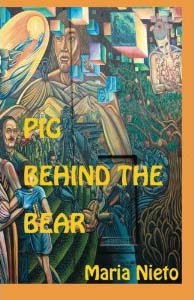
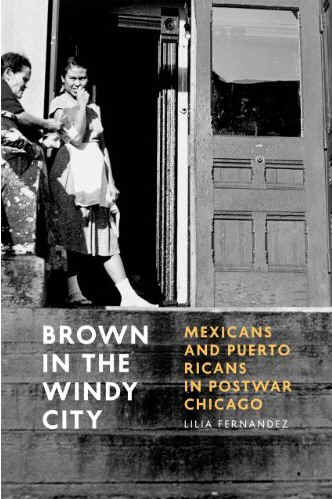
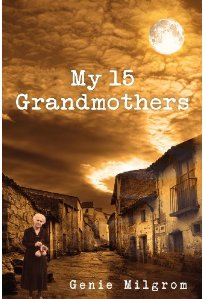
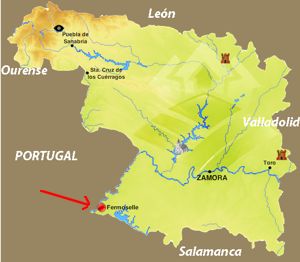
 El Hamsa del relato
El Hamsa del relato El arete de oro con el Magen David
El arete de oro con el Magen David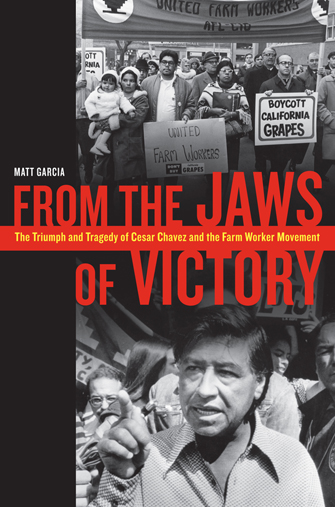
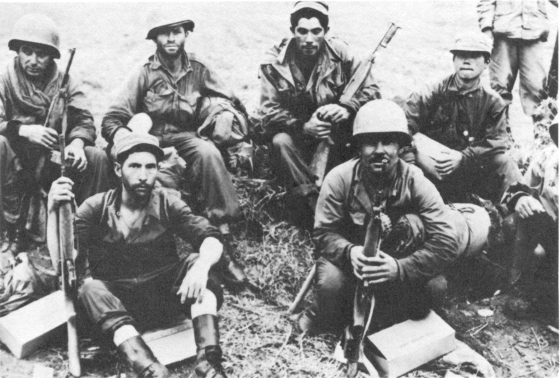
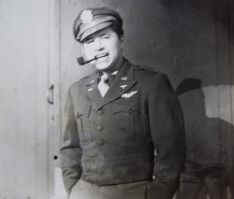
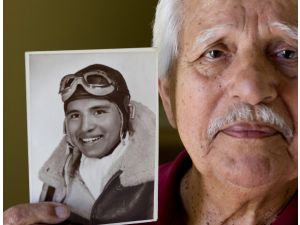
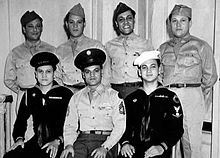
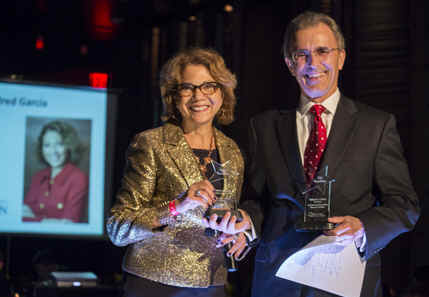


 Geoff relates one of the early incidents "We had two puppies that
had been abandoned by a nearby railway line. One was a Lakeland
Terrier cross and another was a Jack Russell Doberman cross. They were
tiny when they arrived at the centre, and Jasmine approached them and
grabbed one by the scruff of the neck in her mouth and put him on the
settee. Then she fetched the other one and sat down with them,
cuddling them."
Geoff relates one of the early incidents "We had two puppies that
had been abandoned by a nearby railway line. One was a Lakeland
Terrier cross and another was a Jack Russell Doberman cross. They were
tiny when they arrived at the centre, and Jasmine approached them and
grabbed one by the scruff of the neck in her mouth and put him on the
settee. Then she fetched the other one and sat down with them,
cuddling them." "But
she is like that with all of our animals, even the rabbits. She takes
all the stress out of them, and it helps them to not only feel close
to her, but to settle into their new surroundings.. She has done the
same with the fox and badger cubs, she licks the rabbits and guinea
pigs, and even lets the birds perch on the bridge of her nose."
"But
she is like that with all of our animals, even the rabbits. She takes
all the stress out of them, and it helps them to not only feel close
to her, but to settle into their new surroundings.. She has done the
same with the fox and badger cubs, she licks the rabbits and guinea
pigs, and even lets the birds perch on the bridge of her nose."



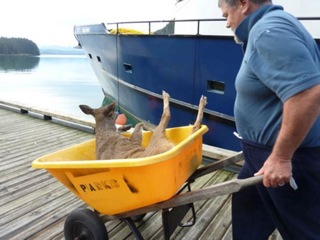
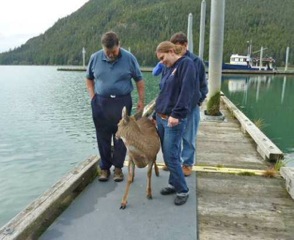
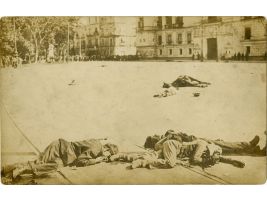
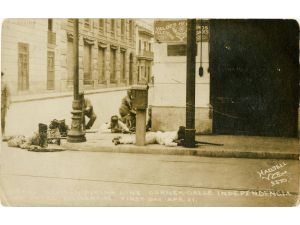
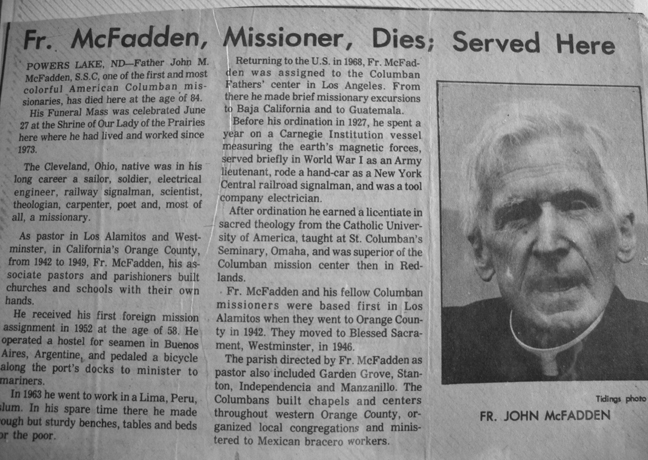
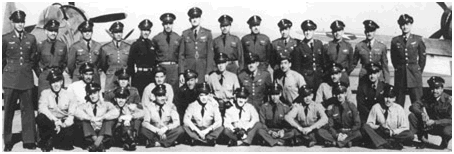
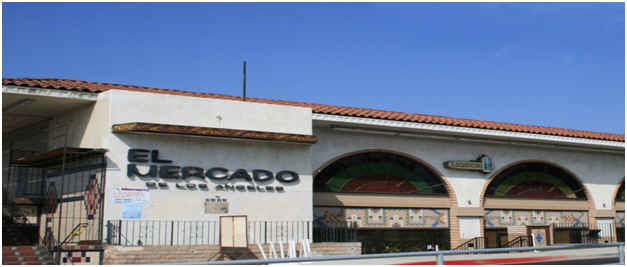

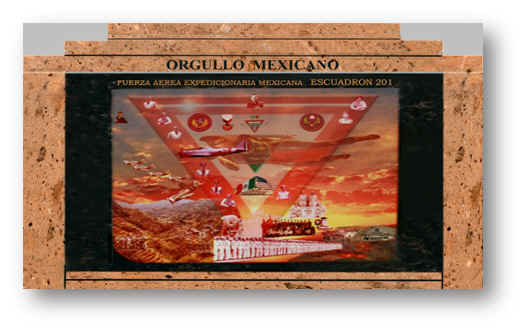

 One
of the steadfast rituals that of Mexican muralism is the passing down
of stories, which is now part of the Los Angeles mural tradition. Luis
C. Garza, a photojournalist and independent curator, has a unique
angle to that.
One
of the steadfast rituals that of Mexican muralism is the passing down
of stories, which is now part of the Los Angeles mural tradition. Luis
C. Garza, a photojournalist and independent curator, has a unique
angle to that.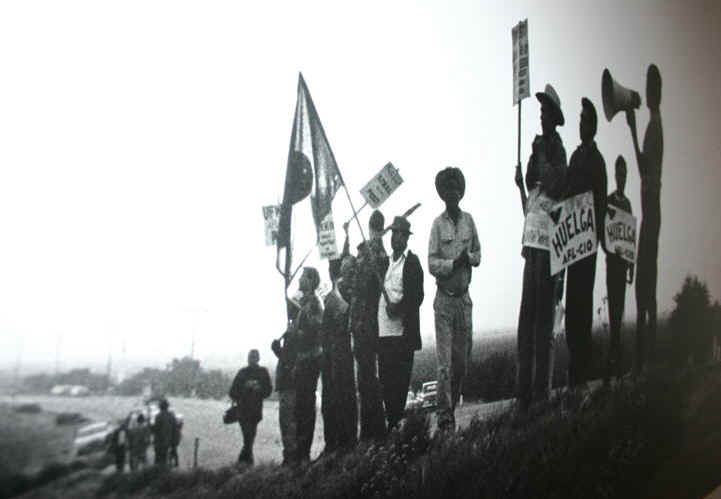
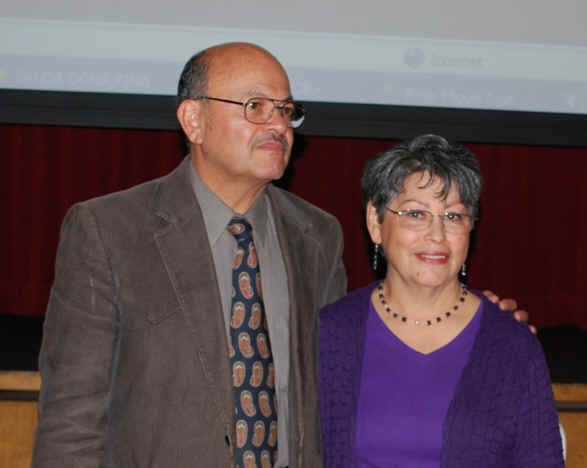

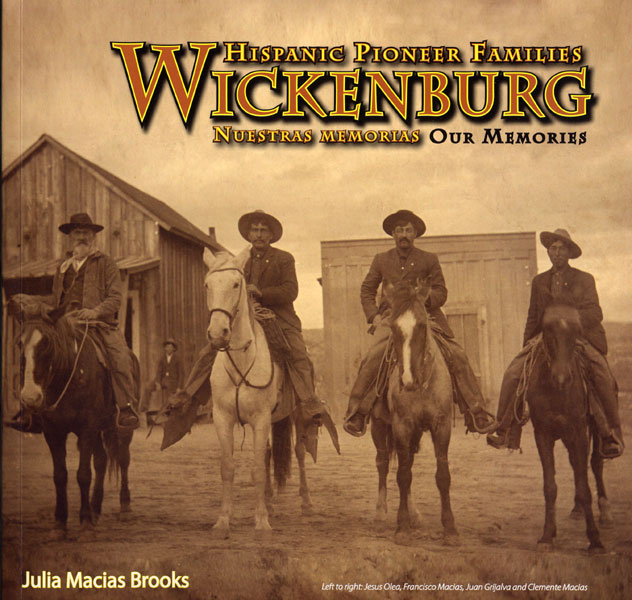
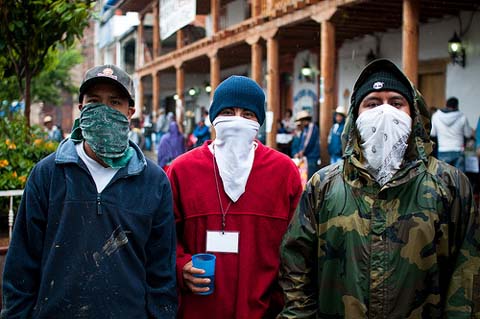
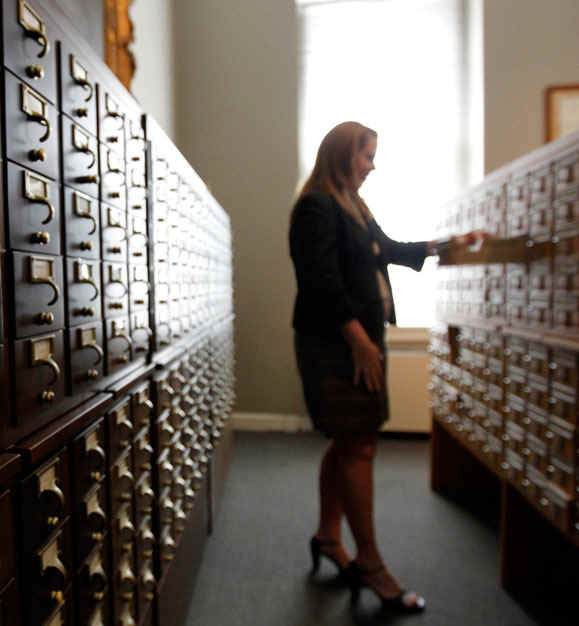
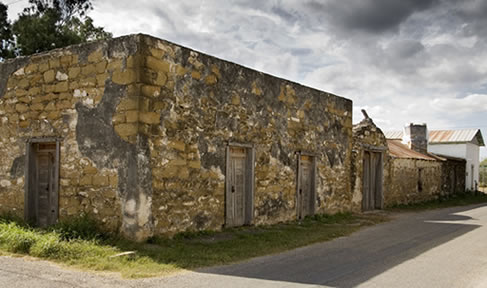 A
National Historic Landmark, the Treviño-Uribe Rancho is an exceptional
example of Spanish Colonial/Mexican Period architecture in the American
Southwest, and one of the finest surviving examples of domestic
borderlands architecture in the United States. Initially constructed ca.
1830 for Spanish/Mexican settler Jesús Treviño as a modest single-room
rancho, the Treviño-Uribe Rancho expanded through four or five building
campaigns over the following 40 years. The rancho is an excellent
representation of borderland architecture and of the early ranching
practices that came to define the built environment of Texas and much of
the southwestern United States in the 19th century.
A
National Historic Landmark, the Treviño-Uribe Rancho is an exceptional
example of Spanish Colonial/Mexican Period architecture in the American
Southwest, and one of the finest surviving examples of domestic
borderlands architecture in the United States. Initially constructed ca.
1830 for Spanish/Mexican settler Jesús Treviño as a modest single-room
rancho, the Treviño-Uribe Rancho expanded through four or five building
campaigns over the following 40 years. The rancho is an excellent
representation of borderland architecture and of the early ranching
practices that came to define the built environment of Texas and much of
the southwestern United States in the 19th century.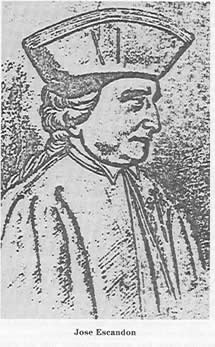 Together,
under the jurisdiction of Escandón, colonizers established many
successful settlements south of the Rio Grande. With the success of the
southern ranchos, settlers looked to expand north of the Rio Grande.
Dolores was the first successful Spanish settlement on the north bank of
the Rio Grande in present day Texas; this was an important step in
extending Spanish ranching and settlement patterns to the north side of
the river.
Together,
under the jurisdiction of Escandón, colonizers established many
successful settlements south of the Rio Grande. With the success of the
southern ranchos, settlers looked to expand north of the Rio Grande.
Dolores was the first successful Spanish settlement on the north bank of
the Rio Grande in present day Texas; this was an important step in
extending Spanish ranching and settlement patterns to the north side of
the river.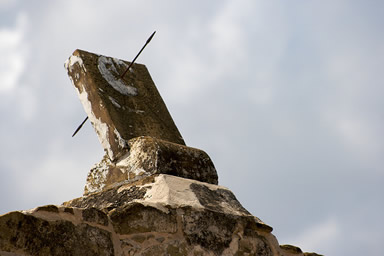 Following
the Mexican War (1846-1848), the United States gained the land on the
northern side of the Rio Grande. Around this time, Doña Uribe’s son,
Blas María Uribe, married Jesús Treviño’s daughter Juliana. In
1848, Blas María Uribe moved his wife and children to the Treviño-Uribe
Rancho to reinforce their claim to the land. Three years later, Uribe
added a two-room sandstone building to accommodate his family and a new
arched gate with a troneras (gun port). At the top of the
arched gate, Uribe placed a stone sun-dial, which visitors can still see
today. The construction techniques reflect distinctly Mexican influences
Uribe took from Guerrero. The thick walls, continuous enclosure of the
complex, and the troneras attest to the still threatening
nature of Rio Grande frontier life in 1851.
Following
the Mexican War (1846-1848), the United States gained the land on the
northern side of the Rio Grande. Around this time, Doña Uribe’s son,
Blas María Uribe, married Jesús Treviño’s daughter Juliana. In
1848, Blas María Uribe moved his wife and children to the Treviño-Uribe
Rancho to reinforce their claim to the land. Three years later, Uribe
added a two-room sandstone building to accommodate his family and a new
arched gate with a troneras (gun port). At the top of the
arched gate, Uribe placed a stone sun-dial, which visitors can still see
today. The construction techniques reflect distinctly Mexican influences
Uribe took from Guerrero. The thick walls, continuous enclosure of the
complex, and the troneras attest to the still threatening
nature of Rio Grande frontier life in 1851. 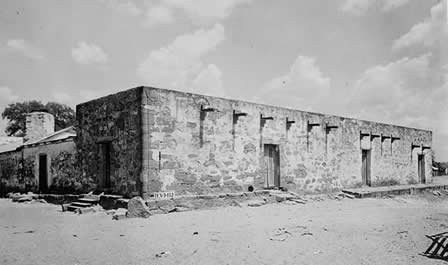 During
its period of prosperity, the town operated a ferry across the Rio
Grande River to its Mexican counterpart and became the principal
crossing point for thousands of head of cattle headed to markets in
Mexico. It also moved staple goods such as aspiloncillo
(unrefined sugar), flour, beans, and corn into the Texas interior. As
the area became safer, and the centralized town came into existence, the
community shifted development away from the river toward the new town
blocks. The residents also moved their activities from their protected
courtyards to the public town plaza. Today, the town still contains more
than 30 historic properties, including the Treviño-Uribe Rancho, most
of which are listed in the National Register of Historic Places as part
of the San Ygnacio National Historic District.
During
its period of prosperity, the town operated a ferry across the Rio
Grande River to its Mexican counterpart and became the principal
crossing point for thousands of head of cattle headed to markets in
Mexico. It also moved staple goods such as aspiloncillo
(unrefined sugar), flour, beans, and corn into the Texas interior. As
the area became safer, and the centralized town came into existence, the
community shifted development away from the river toward the new town
blocks. The residents also moved their activities from their protected
courtyards to the public town plaza. Today, the town still contains more
than 30 historic properties, including the Treviño-Uribe Rancho, most
of which are listed in the National Register of Historic Places as part
of the San Ygnacio National Historic District.

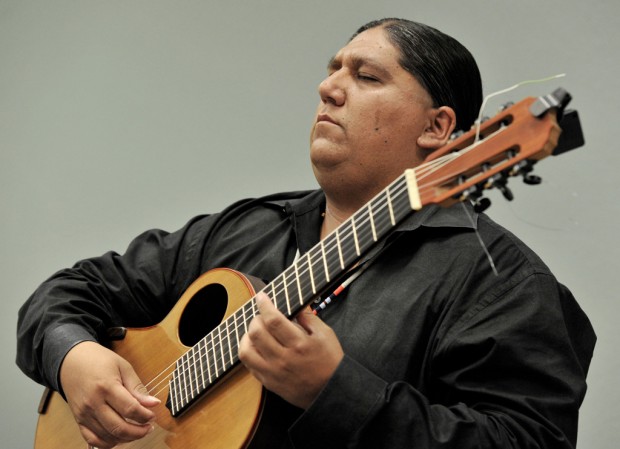
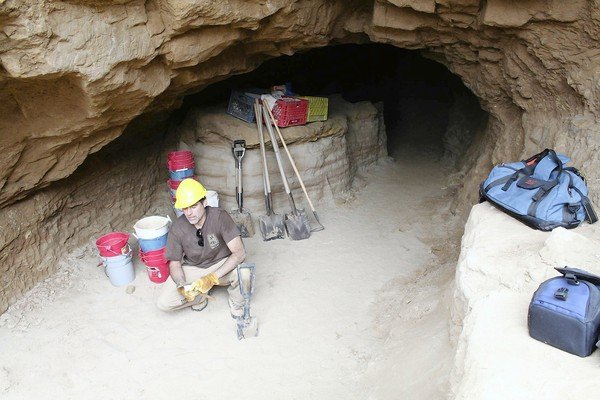
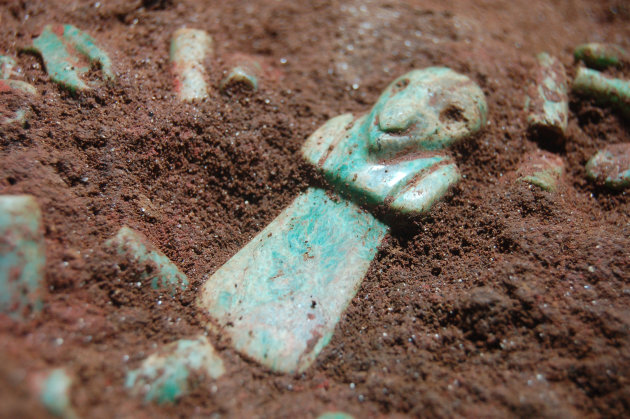
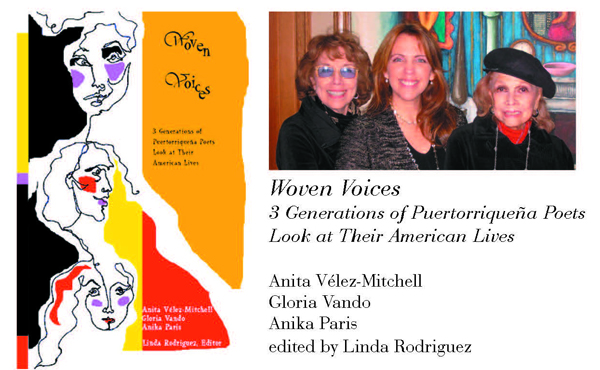
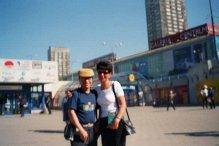 I
went to Warsaw, Poland in the second week of May, 2001 to have a
rendez-vous with a woman from Kremenchug, Ukraine I met via internet.
Little did we know that after three days of being together in Warsaw,
the Polish capital, we would find ourselves doing an uncontemplated
visit to Oswiecim --a town callled Auschwitz by the
Germans. My plan along with the rendez-vous was to visit other places
in Poland especially Kraków/Cracow where Pope John Paul II
came from and Auschwitz did not come to my mind. After seeing the
Polish capital and its impressive underground shopping centres and
offices which covered a large area, we were then ready to visit other
places and Kraków was the main item in my agenda. We then left early
in the morning to catch the train. We enjoyed seeing the countrysides,
the small towns, and people on the way to Krakow while on the train.
The journey took us at least 2.5 hours including train stops. When we
arrived in Kraków, we found out that the next train stop was
Auschwitz which got my big attention. I did not know that Auschwitz
was not very far and would take less than 40 minutes train ride. We
then decided not to linger too long on our tour and visit of Kraków
and, thereafter, boarded a train to go to Auschwitz. Incidentally
Auschwitz is not a big city; it has 45,000 inhabitants. Kraków on the
other hand is the third largest city in Poland with 734,400
inhabitants. It was made the capital of Germany's
I
went to Warsaw, Poland in the second week of May, 2001 to have a
rendez-vous with a woman from Kremenchug, Ukraine I met via internet.
Little did we know that after three days of being together in Warsaw,
the Polish capital, we would find ourselves doing an uncontemplated
visit to Oswiecim --a town callled Auschwitz by the
Germans. My plan along with the rendez-vous was to visit other places
in Poland especially Kraków/Cracow where Pope John Paul II
came from and Auschwitz did not come to my mind. After seeing the
Polish capital and its impressive underground shopping centres and
offices which covered a large area, we were then ready to visit other
places and Kraków was the main item in my agenda. We then left early
in the morning to catch the train. We enjoyed seeing the countrysides,
the small towns, and people on the way to Krakow while on the train.
The journey took us at least 2.5 hours including train stops. When we
arrived in Kraków, we found out that the next train stop was
Auschwitz which got my big attention. I did not know that Auschwitz
was not very far and would take less than 40 minutes train ride. We
then decided not to linger too long on our tour and visit of Kraków
and, thereafter, boarded a train to go to Auschwitz. Incidentally
Auschwitz is not a big city; it has 45,000 inhabitants. Kraków on the
other hand is the third largest city in Poland with 734,400
inhabitants. It was made the capital of Germany's 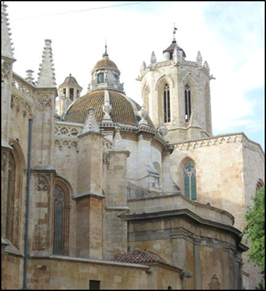 When
doing genealogical research in Spain, the two types of records used most
often are civil registration and Catholic Church records. In this
article we will discuss different strategies we have used to find
Catholic Church records and what you might expect when visiting an
ecclesiastical archive.
When
doing genealogical research in Spain, the two types of records used most
often are civil registration and Catholic Church records. In this
article we will discuss different strategies we have used to find
Catholic Church records and what you might expect when visiting an
ecclesiastical archive.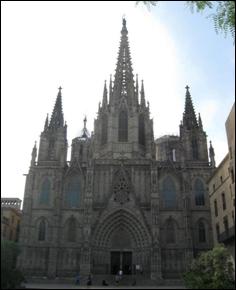 One
recommendation would be a good Catholic Church directory listing not
only the names of parishes but their respective dioceses and
archdioceses as well. One useful we have found online is the
One
recommendation would be a good Catholic Church directory listing not
only the names of parishes but their respective dioceses and
archdioceses as well. One useful we have found online is the 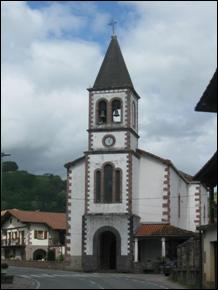 Many
additional records can be found on microfilm. Using the
Many
additional records can be found on microfilm. Using the 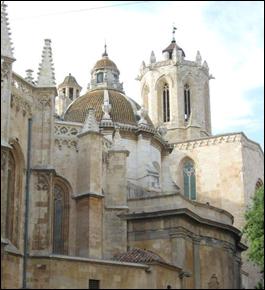
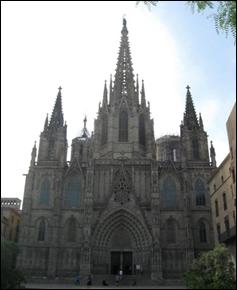
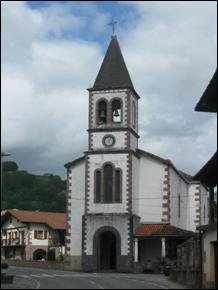
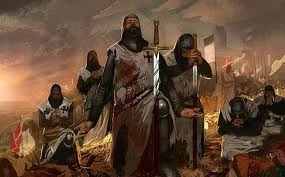
 Sent
by Rafael Ojeda
Sent
by Rafael Ojeda  For the head of Libya's national election commission, the method by
which Americans vote is startling in that it depends so much on trust
and the good faith of election officials and voters alike.
For the head of Libya's national election commission, the method by
which Americans vote is startling in that it depends so much on trust
and the good faith of election officials and voters alike.


